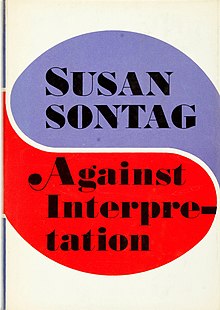Feminist literary criticism is literary criticism informed by feminist theory, or more broadly, by the politics of feminism. It uses the principles and ideology of feminism to critique the language of literature. This school of thought seeks to analyze and describe the ways in which literature portrays the narrative of male domination by exploring the economic, social, political, and psychological forces embedded within literature. This way of thinking and criticizing works can be said to have changed the way literary texts are viewed and studied, as well as changing and expanding the canon of what is commonly taught. It is used a lot in Greek myths.

A genre of arts criticism, literary criticism or literary studies is the study, evaluation, and interpretation of literature. Modern literary criticism is often influenced by literary theory, which is the philosophical analysis of literature's goals and methods. Although the two activities are closely related, literary critics are not always, and have not always been, theorists.

Hermeneutics is the theory and methodology of interpretation, especially the interpretation of biblical texts, wisdom literature, and philosophical texts. As necessary, hermeneutics may include the art of understanding and communication.
Camp is an aesthetic style and sensibility that regards something as appealing because of perceived bad taste and ironic value. Camp aesthetics disrupt many modernist notions of what art is and what can be classified as high art by inverting aesthetic attributes such as beauty, value, and taste, inviting a different kind of aesthetic apprehension and consumption.

Susan Lee Sontag was an American writer, critic, and public intellectual. She mostly wrote essays, but also published novels; she published her first major work, the essay "Notes on 'Camp' ", in 1964. Her best-known works include the critical works Against Interpretation (1966), On Photography (1977), Illness as Metaphor (1978) and Regarding the Pain of Others (2003), as well as the fictional works The Way We Live Now (1986), The Volcano Lover (1992), and In America (1999).

Jean Paul Gustave Ricœur was a French philosopher best known for combining phenomenological description with hermeneutics. As such, his thought is within the same tradition as other major hermeneutic phenomenologists, Martin Heidegger, Hans-Georg Gadamer, and Gabriel Marcel. In 2000, he was awarded the Kyoto Prize in Arts and Philosophy for having "revolutionized the methods of hermeneutic phenomenology, expanding the study of textual interpretation to include the broad yet concrete domains of mythology, biblical exegesis, psychoanalysis, theory of metaphor, and narrative theory."

Eve Kosofsky Sedgwick was an American academic scholar in the fields of gender studies, queer theory, and critical theory. Sedgwick published several books considered groundbreaking in the field of queer theory, and her critical writings helped create the field of queer studies, in which she was one of the most influential figures. Sedgwick's essays became the framework for critics of poststructuralism, multiculturalism, and gay studies.
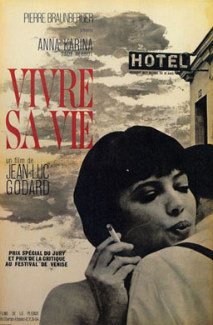
Vivre sa vie is a 1962 French New Wave drama film written and directed by Jean-Luc Godard. The film was released in the United States as My Life to Live and in the United Kingdom as It's My Life.

"Notes on 'Camp'" is a 1964 essay by Susan Sontag that brought the aesthetic sensibility known as "camp" to mainstream consciousness.
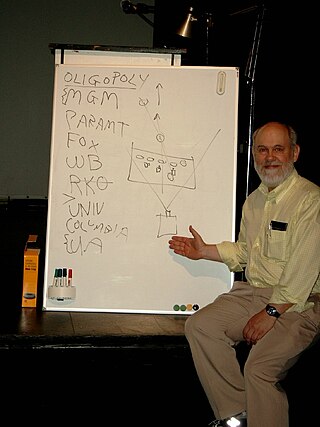
David Jay Bordwell was an American film theorist and film historian. After receiving his PhD from the University of Iowa in 1973, he wrote more than fifteen volumes on the subject of cinema including Narration in the Fiction Film (1985), Ozu and the Poetics of Cinema (1988), Making Meaning (1989), and On the History of Film Style (1997).
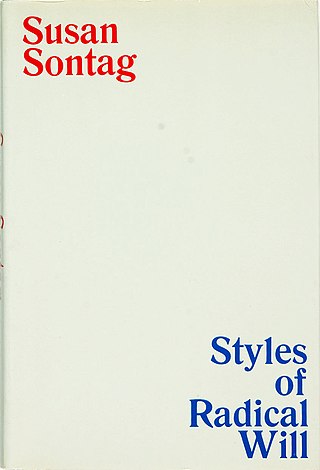
Styles of Radical Will is a collection of essays by Susan Sontag published in 1969. Among the subjects discussed are film, literature, politics, and pornography. It is Sontag's second collection of non-fiction after Against Interpretation, which was published in 1966. Most of the essays in this book were originally published in Aspen, Partisan Review, the Tulane Drama Review, Sight and Sound, and Esquire.
In art and art criticism, form and content are considered distinct aspects of a work of art. The term form refers to the work's composition, techniques and media used, and how the elements of design are implemented. It mainly focuses on the physical aspects of the artwork, such as medium, color, value, space, etc., rather than on what it communicates. Content, on the other hand, refers to a work's subject matter, i.e., its meaning. But the terms form and content can be applied not only to art: every meaningful text has its inherent form, hence form and content appear in very diverse applications of human thought: from fine arts to even mathematics and natural sciences. Even more, the distinction between these terms' meanings in different domains of application seems rather unnatural, since the idea behind "form and content in art" and "form and content in science" is pretty much the same.
Rita Felski is an academic and critic, who holds the John Stewart Bryan Professorship of English at the University of Virginia and is a former editor of New Literary History. She is also Niels Bohr Professor at the University of Southern Denmark (2016–2021).
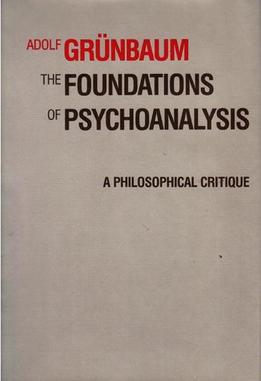
The Foundations of Psychoanalysis: A Philosophical Critique is a 1984 book by the philosopher Adolf Grünbaum, in which the author offers a philosophical critique of the work of Sigmund Freud, the founder of psychoanalysis. The book was first published in the United States by the University of California Press. Grünbaum evaluates the status of psychoanalysis as a natural science, criticizes the method of free association and Freud's theory of dreams, and discusses the psychoanalytic theory of paranoia. He argues that Freud, in his efforts to defend psychoanalysis as a method of clinical investigation, employed an argument that Grünbaum refers to as the "Tally Argument"; according to Grünbaum, it rests on the premises that only psychoanalysis can provide patients with correct insight into the unconscious pathogens of their psychoneuroses and that such insight is necessary for successful treatment of neurotic patients. Grünbaum argues that the argument suffers from major problems. Grünbaum also criticizes the views of psychoanalysis put forward by other philosophers, including the hermeneutic interpretations propounded by Jürgen Habermas and Paul Ricœur, as well as Karl Popper's position that psychoanalytic propositions cannot be disconfirmed and that psychoanalysis is therefore a pseudoscience.

Freud and Philosophy: An Essay on Interpretation is a 1965 book about Sigmund Freud, the founder of psychoanalysis, written by the French philosopher Paul Ricœur. In Freud and Philosophy, Ricœur interprets Freudian work in terms of hermeneutics, a theory that governs the interpretation of a particular text, and phenomenology, a school of philosophy founded by Edmund Husserl. Ricœur addresses questions such as the nature of interpretation in psychoanalysis, the understanding of human nature and the relationship between Freud's interpretation of culture amongst other interpretations. The book was first published in France by Éditions du Seuil, and in the United States by Yale University Press.
The hermeneutics of suspicion is a style of literary interpretation in which texts are read with skepticism in order to expose their purported repressed or hidden meanings.
Simon During is a New Zealand-born academic and cultural theorist.
In literary criticism and cultural studies, postcritique is the attempt to find new forms of reading and interpretation that go beyond the methods of critique, critical theory, and ideological criticism. Such methods have been characterized as a "hermeneutics of suspicion" by Paul Ricœur and as a "paranoid" or suspicious style of reading by Eve Kosofsky Sedgwick. Proponents of postcritique argue that the interpretive practices associated with these ways of reading are now unlikely to yield useful or even interesting results. As Rita Felski and Elizabeth S. Anker put it in the introduction to Critique and Postcritique, "the intellectual or political payoff of interrogating, demystifying, and defamiliarizing is no longer quite so self-evident." A postcritical reading of a literary text might instead emphasize emotion or affect, or describe various other phenomenological or aesthetic dimensions of the reader's experience. At other times, it might focus on issues of reception, explore philosophical insights gleaned via the process of reading, pose formalist questions of the text, or seek to resolve a "sense of confusion."

Camp: Notes on Fashion was the 2019 high fashion art exhibition of the Anna Wintour Costume Center, a wing of the Metropolitan Museum of Art in New York that houses the collection of the Costume Institute.
